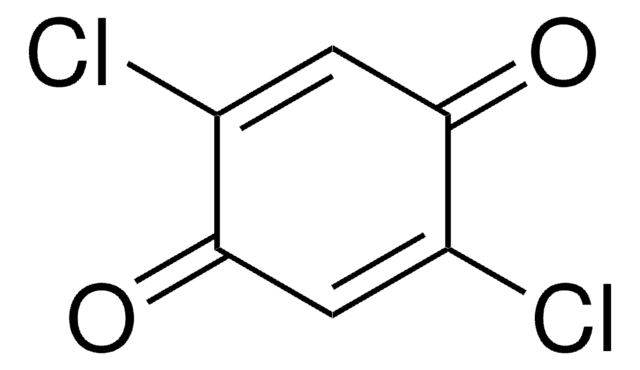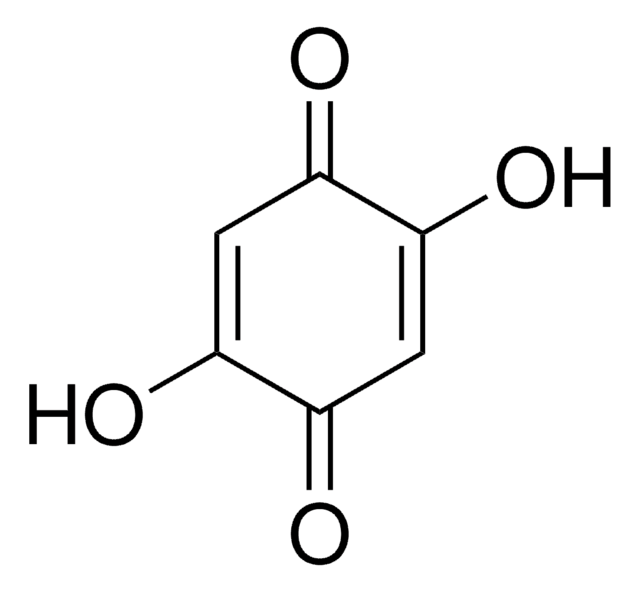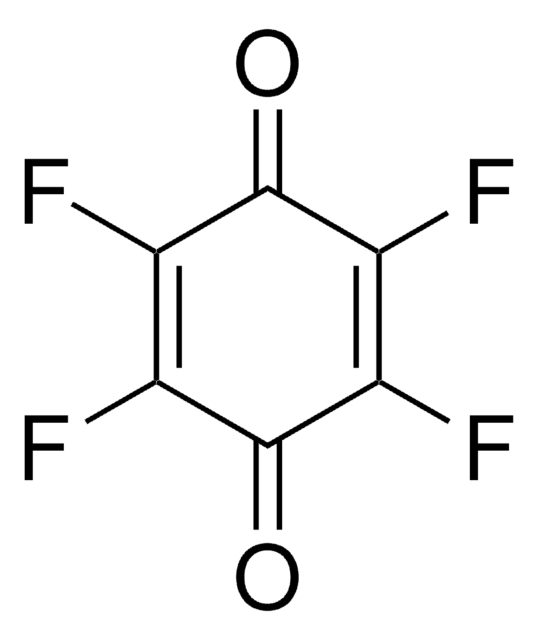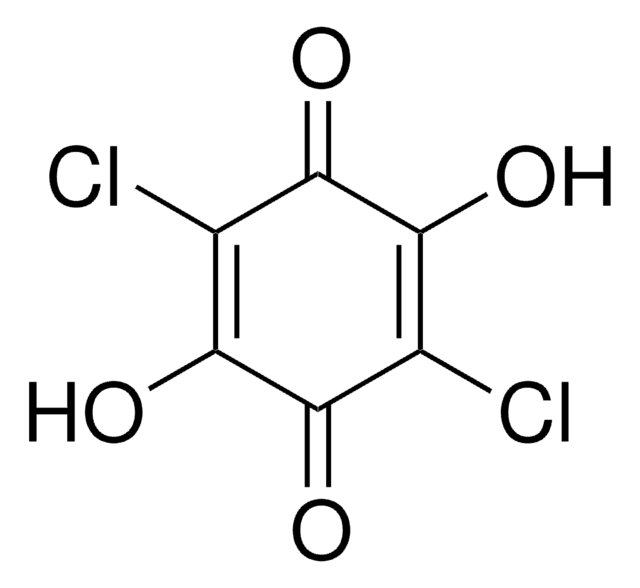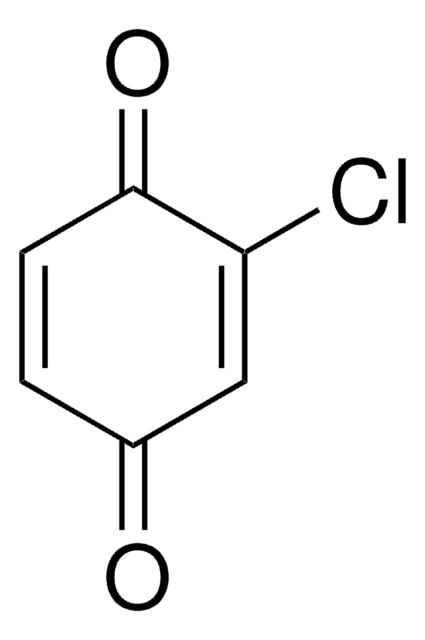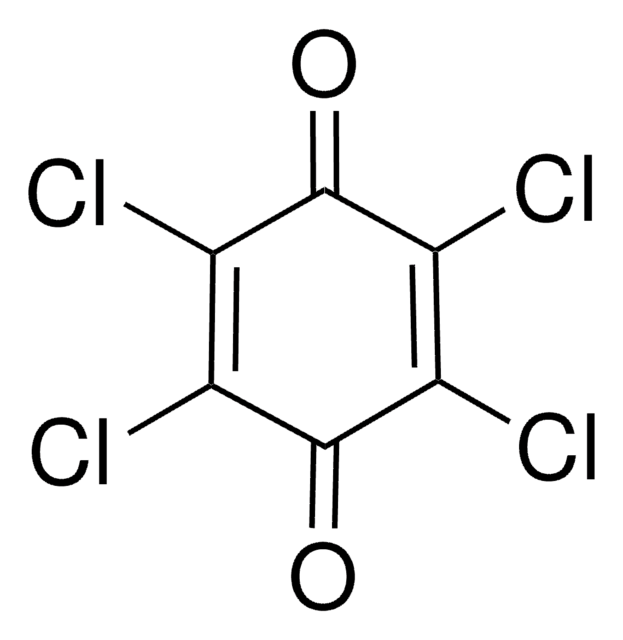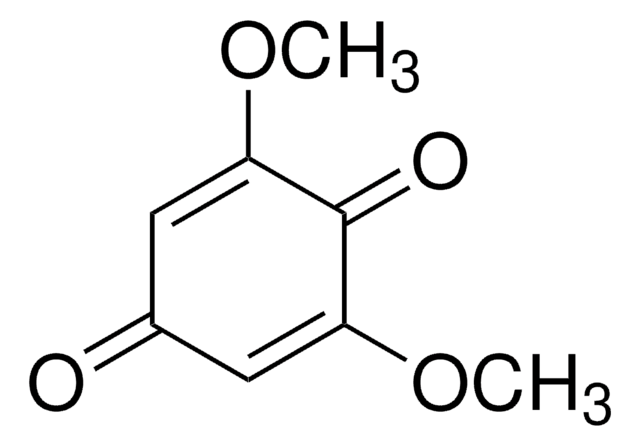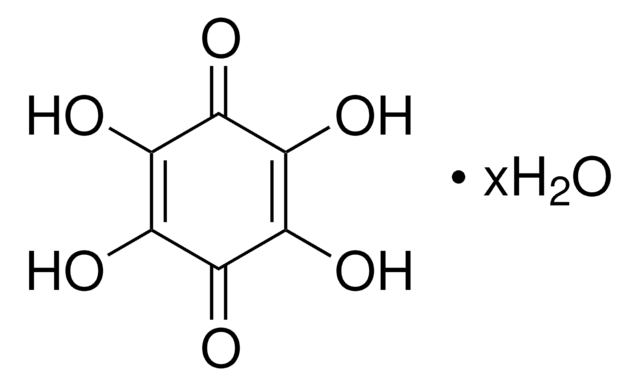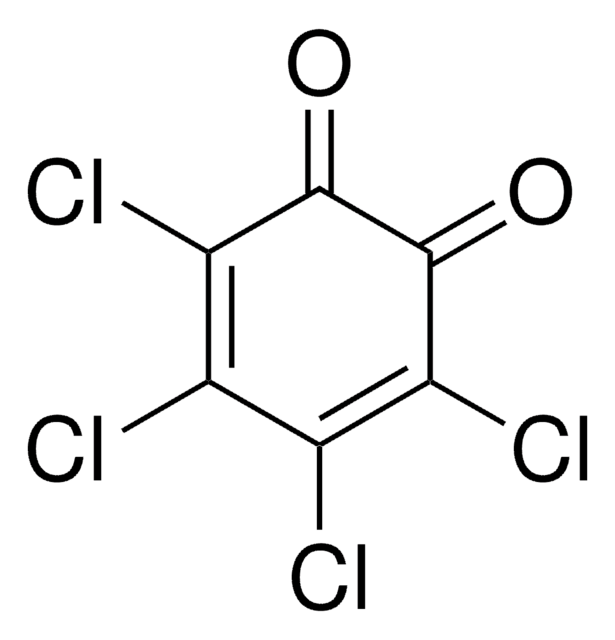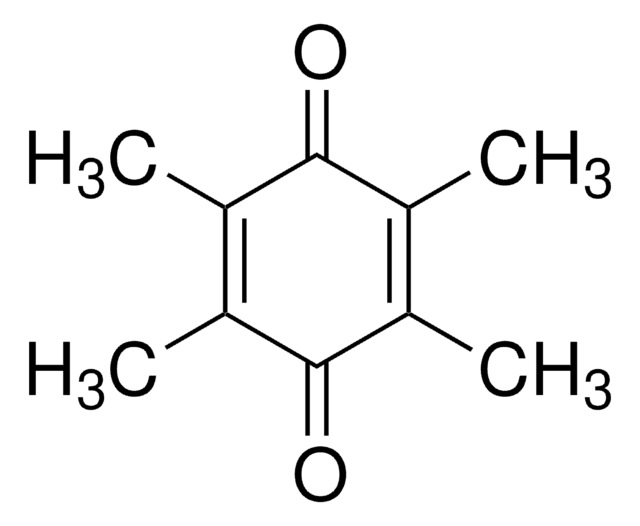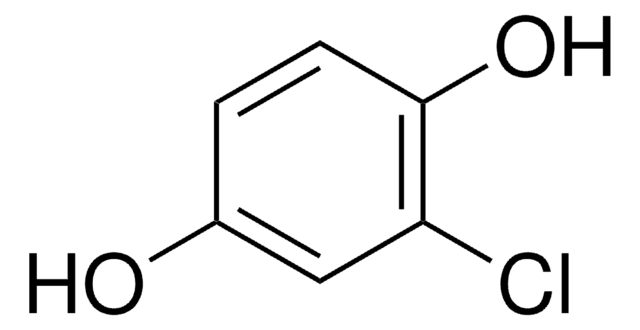431982
2,6-Dichloro-1,4-benzoquinone
98%
동의어(들):
2,6-Dichloro-2,5-cyclohexadiene-1,4-dione, 2,6-Dichloro-p-benzoquinone, 2,6-Dichlorobenzoquinone, 2,6-Dichloroquinone
로그인조직 및 계약 가격 보기
모든 사진(1)
About This Item
실험식(Hill 표기법):
C6H2Cl2O2
CAS Number:
Molecular Weight:
176.98
EC Number:
MDL number:
UNSPSC 코드:
12352100
PubChem Substance ID:
NACRES:
NA.22
추천 제품
Quality Level
분석
98%
mp
122-124 °C (lit.)
SMILES string
ClC1=CC(=O)C=C(Cl)C1=O
InChI
1S/C6H2Cl2O2/c7-4-1-3(9)2-5(8)6(4)10/h1-2H
InChI key
JCARTGJGWCGSSU-UHFFFAOYSA-N
관련 카테고리
일반 설명
2,6-Dichloro-1,4-benzoquinone (DCBQ, 2,6-DCBQ) is a halobenzoquinone. Halobenzoquinones are disinfection byproducts (DBPs) found in drinking water. They are capable of producing reactive oxygen species and causing oxidative damage to proteins and DNA in T24 human bladder carcinoma cells. UV-induced transformation of DCBQ in drinking water has been reported. Detection of DCBQ in drinking water by liquid chromatography-ESI tandem mass spectrometry has been reported.
애플리케이션
2,6-Dichloro-1,4-benzoquinone is the suitable reagent used to in a study to evaluate the diffusion coefficients (D) for a family of quinones, nitroaromatics, ferrocenes and aromatic hydrocarbon compounds, in acetonitrile by single potential step chronoamperometry. It may be used in the preparation of :
- 2,3,5-Trichloro-1,4-dihydroquinone
- 2,3,5-trichloro-1,4-benzoquinone
- 2,6-Dichloro-1,4-dihydroquinone
신호어
Warning
유해 및 위험 성명서
Hazard Classifications
Eye Irrit. 2 - Skin Irrit. 2 - STOT SE 3
표적 기관
Respiratory system
Storage Class Code
11 - Combustible Solids
WGK
WGK 3
Flash Point (°F)
Not applicable
Flash Point (°C)
Not applicable
개인 보호 장비
dust mask type N95 (US), Eyeshields, Gloves
이미 열람한 고객
Jinhua Li et al.
Toxicological sciences : an official journal of the Society of Toxicology, 141(2), 335-343 (2014-05-09)
Halobenzoquinones (HBQs) are a new class of drinking water disinfection byproducts (DBPs) and are capable of producing reactive oxygen species and causing oxidative damage to proteins and DNA in T24 human bladder carcinoma cells. However, the exact mechanism of the
Kai He et al.
Journal of hazardous materials, 351, 98-107 (2018-03-10)
Anthropogenic compounds accidentally released to the environment could be important precursors of disinfection byproducts (DBPs) in drinking water treatment processes. In this study, the haloacetic acid formation potentials (HAAFPs) of 155 anthropogenic compounds listed on the Japanese pollutant release and
A Magnuson et al.
Biochemistry, 36(11), 3254-3261 (1997-03-18)
The binding of Mn2+ to manganese-depleted photosystem II was investigated after chemical modification of histidyl and carboxylic acid residues in the presence or absence of the native manganese cluster. K(M) values for Mn2+ were determined from steady-state electron transfer between
Masako Iwai et al.
Photosynthesis research, 87(3), 313-322 (2006-05-16)
PS II-H is a small hydrophobic protein that is universally present in the PS II core complex of cyanobacteria and plants. The role of PS II-H was studied by directed mutagenesis and biochemical analysis in the thermophilic cyanobacterium Thermosynechococcus elongatus
A toxic disinfection by-product, 2,6-dichloro-1,4-benzoquinone, identified in drinking water.
Feng Qin et al.
Angewandte Chemie (International ed. in English), 49(4), 790-792 (2009-12-22)
자사의 과학자팀은 생명 과학, 재료 과학, 화학 합성, 크로마토그래피, 분석 및 기타 많은 영역을 포함한 모든 과학 분야에 경험이 있습니다..
고객지원팀으로 연락바랍니다.